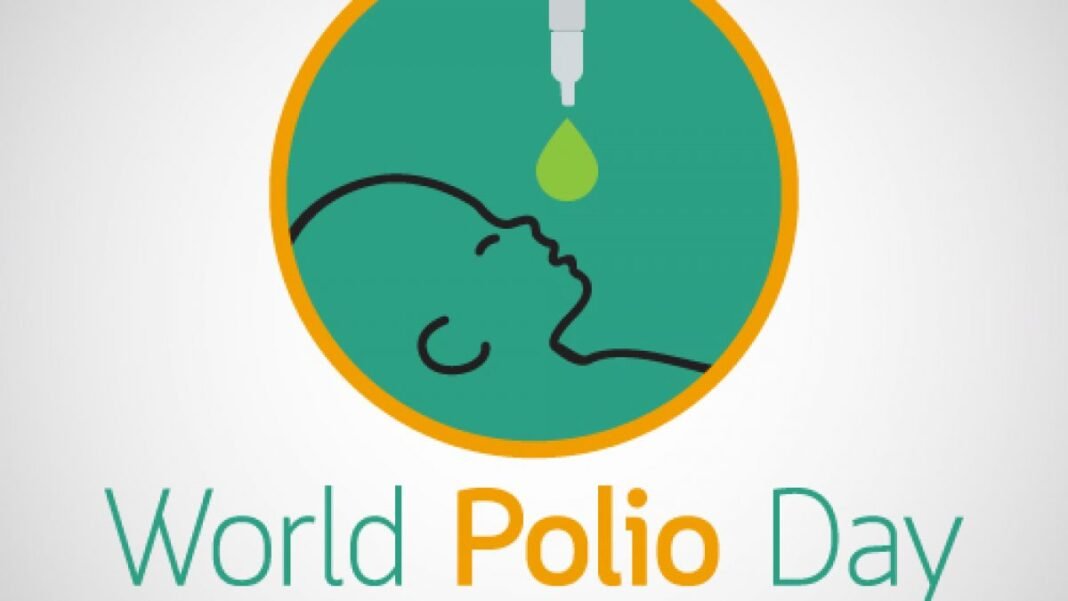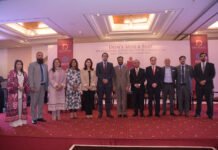World Polio Day spotlights the global campaign to eradicate poliomyelitis (polio) on a worldwide scale. The polio virus is a fatal illness that the World Health Assembly committed to eradicating in 1988.
The WHO European Region attained the status of being polio-free in 2002 and has maintained this status every year since.
Annually, on the 24th of October, we commemorate World Polio Day to enhance awareness about the significance of polio vaccination for safeguarding all children from this devastating disease.
WHO also celebrates the dedication of countless parents, healthcare professionals, and volunteers whose contributions make the goal of polio eradication achievable.
Sustaining a polio-free future for everyone necessitates ongoing efforts to uphold high immunization coverage, implement rigorous surveillance systems for detecting the presence of the virus, and prepare for swift responses in the event of an outbreak.
Polio is a highly contagious disease that primarily affects young children, attacking the nervous system and potentially causing spinal and respiratory paralysis and, in some cases, death.
Pakistan, in collaboration with Rotary International, is actively engaged in the battle to eliminate polio. This endeavor is crucial, as the country has experienced a surge in polio cases.
Challenges persist due to remote and conservative populations and skepticism towards the polio vaccine. Continuous migration and porous borders with Afghanistan contribute to the resurgence of the virus.
Rotary International has been at the forefront of efforts to end polio in Pakistan, contributing over $2.6 billion.
On World Polio Day, Pakistan reaffirms its commitment to polio eradication, acknowledging that achieving a polio-free world is within reach. Africa has already been certified as wild polio-free, leaving Afghanistan and Pakistan as the final frontiers in the battle against polio.
The Pakistan Polio Eradication Programme will launch a sub-national campaign to vaccinate over 30 million children under the age of five in 128 districts.
Dr. Rana Safdar, Coordinator of the National Emergency Operations Centre, acknowledges that while zero cases haven’t been reached, the program has secured the future of many children through consistent vaccination efforts.
Caretaker Prime Minister Anwaar-ul-Haq Kakar vows to resist anti-vaxxers who hinder polio eradication efforts, emphasizing the importance of vaccination in combating a disease that affects children.
The caretaker Health Minister, Nadeem Jan, acknowledges the dedication of community health workers and calls for their recognition and motivation to continue the mission of a polio-free Pakistan.
Pakistan’s ongoing vaccination campaigns and efforts underscore the commitment to rid the country of polio, ensuring a healthier future for children.
Polio has existed since ancient times, with depictions in ancient Egyptian art showing children with the characteristic withered limbs associated with the disease.
Although it afflicted children globally for centuries, the first clinical description of polio didn’t occur until 1789, and it was officially recognized as a condition in 1840.
Frequent epidemics turned polio into the world’s most feared disease in the late 19th and early 20th centuries.
In the mid-20th century, the poliovirus was prevalent worldwide, causing over half a million deaths or cases of paralysis annually. Given the lack of a cure and escalating epidemics, a vaccine was urgently needed.
A breakthrough occurred in 1949 when scientists John Enders, Thomas Weller, and Frederick Robbins successfully cultivated the poliovirus in human tissue, leading to the Nobel Prize in 1954.
In the early 1950s, American physician Jonas Salk developed the first effective vaccine, leading to a significant drop in polio cases.
Sabin’s live-attenuated vaccine, administered orally, gained popularity. In 1988, the World Health Assembly resolved to eradicate polio, leading to the launch of the Global Polio Eradication Initiative (GPEI).
Significant progress was made in the 21st century, with polio cases reduced by over 99% worldwide in less than two decades.
However, using the OPV for a long time could spread vaccine-derived polioviruses (cVDPVs) in places where not many people have been vaccinated.
In summary, World Polio Day serves as a reminder of the ongoing global fight to eliminate polio and reflects on the progress made, the challenges that remain, and the importance of continued vaccination efforts.
Iffat Masood is Contributor and Content writer on THE DIPLOMATIC INSIGHT, and also Ambassador from IAMCR. She is perusing her PhD. from UAB Barcelona, Spain in Audio-Video Communications and Advertising.








